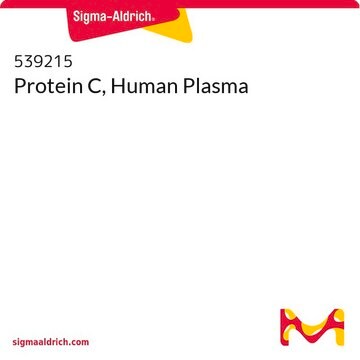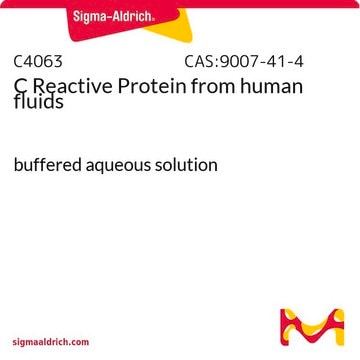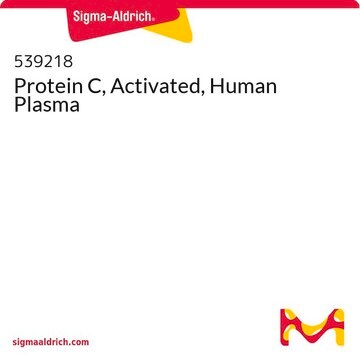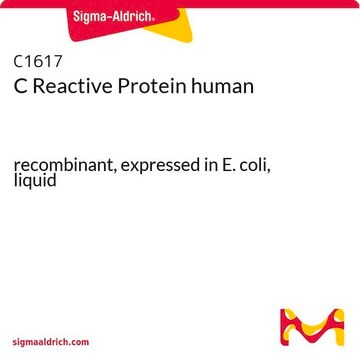P2200
Protein C from human plasma
Activated, lyophilized powder, ≥90% (SDS-PAGE)
Synonyme(s) :
Activated Protein C
About This Item
Produits recommandés
Source biologique
human plasma
Niveau de qualité
Pureté
≥90% (SDS-PAGE)
Forme
lyophilized powder
Poids mol.
heavy chain 41 kDa
light chain 21 kDa
Technique(s)
inhibition assay: suitable
Solubilité
H2O: 1 mg/mL
Numéro d'accès UniProt
Température de stockage
−20°C
Informations sur le gène
human ... PROC(5624)
Description générale
Application
Actions biochimiques/physiologiques
Forme physique
Clause de non-responsabilité
Code de la classe de stockage
11 - Combustible Solids
Classe de danger pour l'eau (WGK)
WGK 3
Point d'éclair (°F)
Not applicable
Point d'éclair (°C)
Not applicable
Certificats d'analyse (COA)
Recherchez un Certificats d'analyse (COA) en saisissant le numéro de lot du produit. Les numéros de lot figurent sur l'étiquette du produit après les mots "Lot" ou "Batch".
Déjà en possession de ce produit ?
Retrouvez la documentation relative aux produits que vous avez récemment achetés dans la Bibliothèque de documents.
Les clients ont également consulté
Notre équipe de scientifiques dispose d'une expérience dans tous les secteurs de la recherche, notamment en sciences de la vie, science des matériaux, synthèse chimique, chromatographie, analyse et dans de nombreux autres domaines..
Contacter notre Service technique







